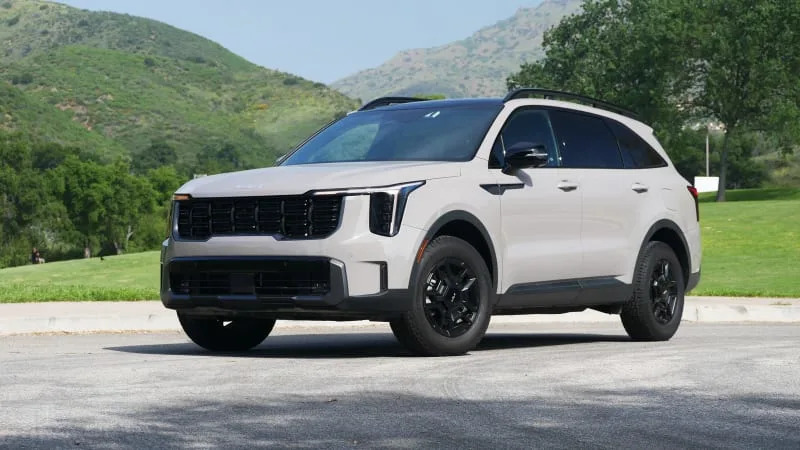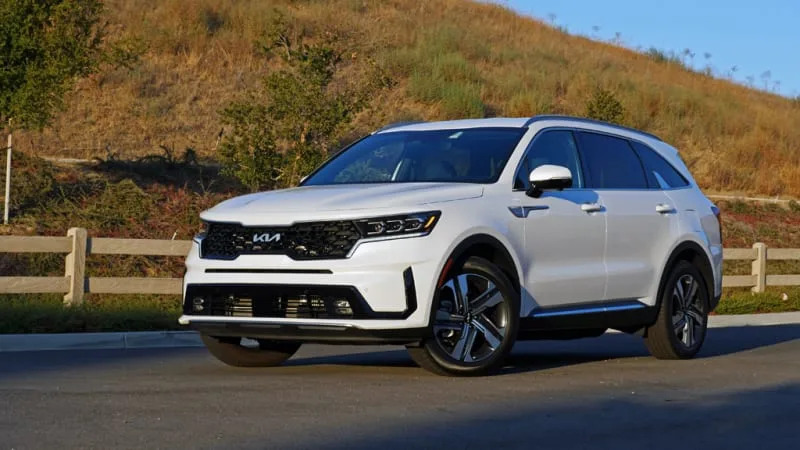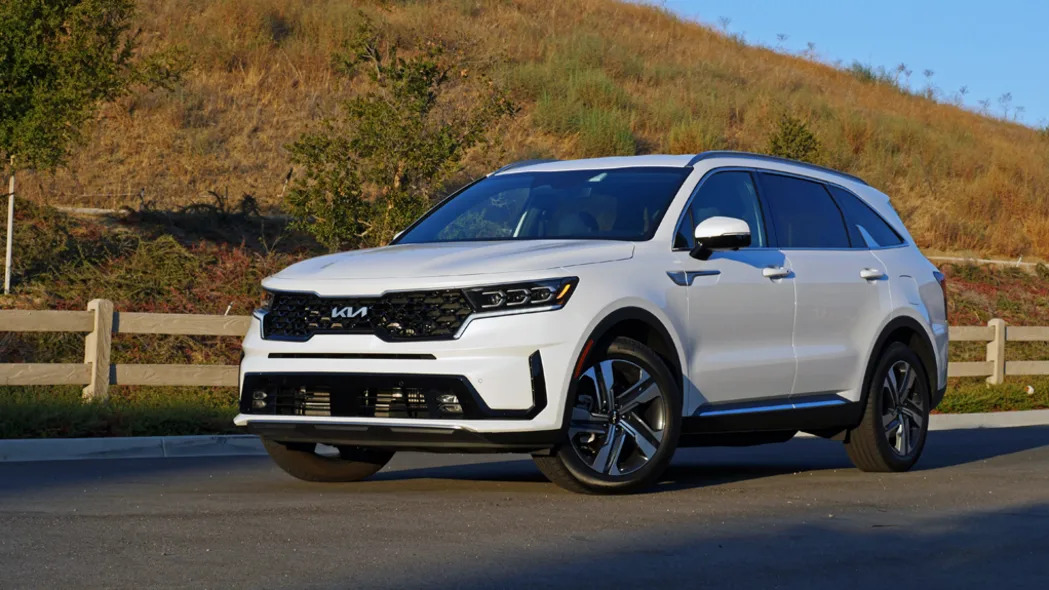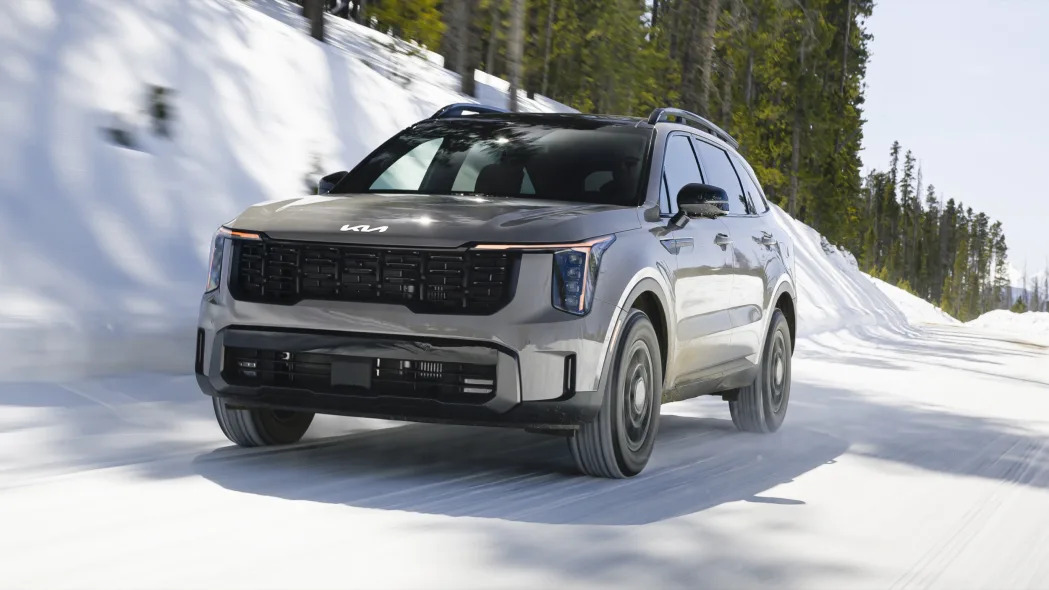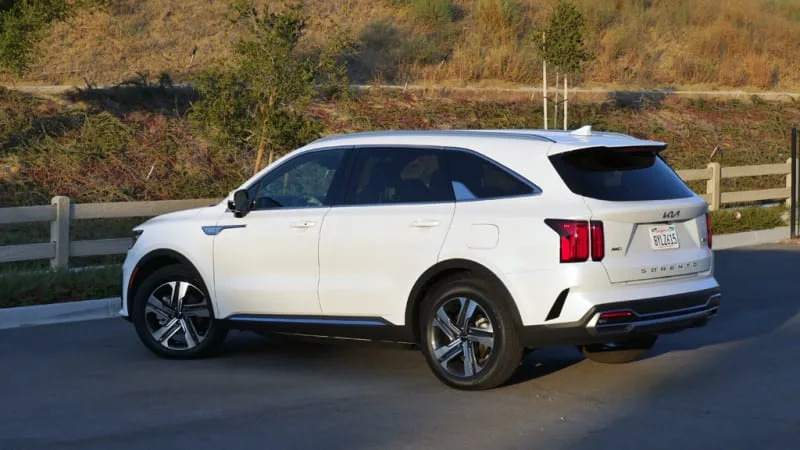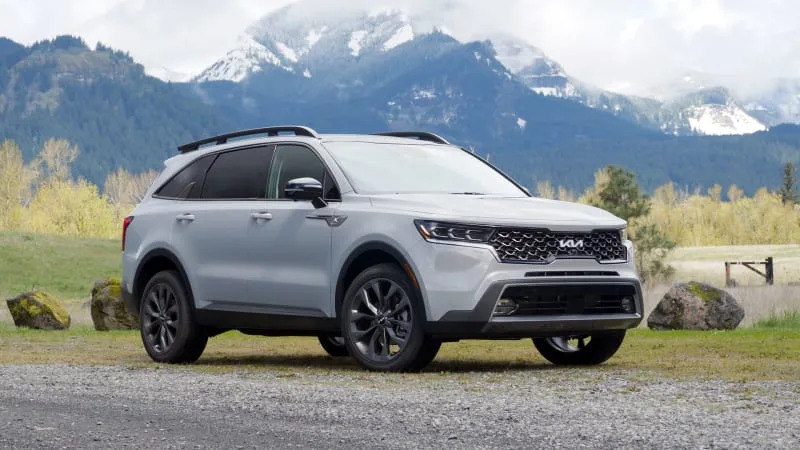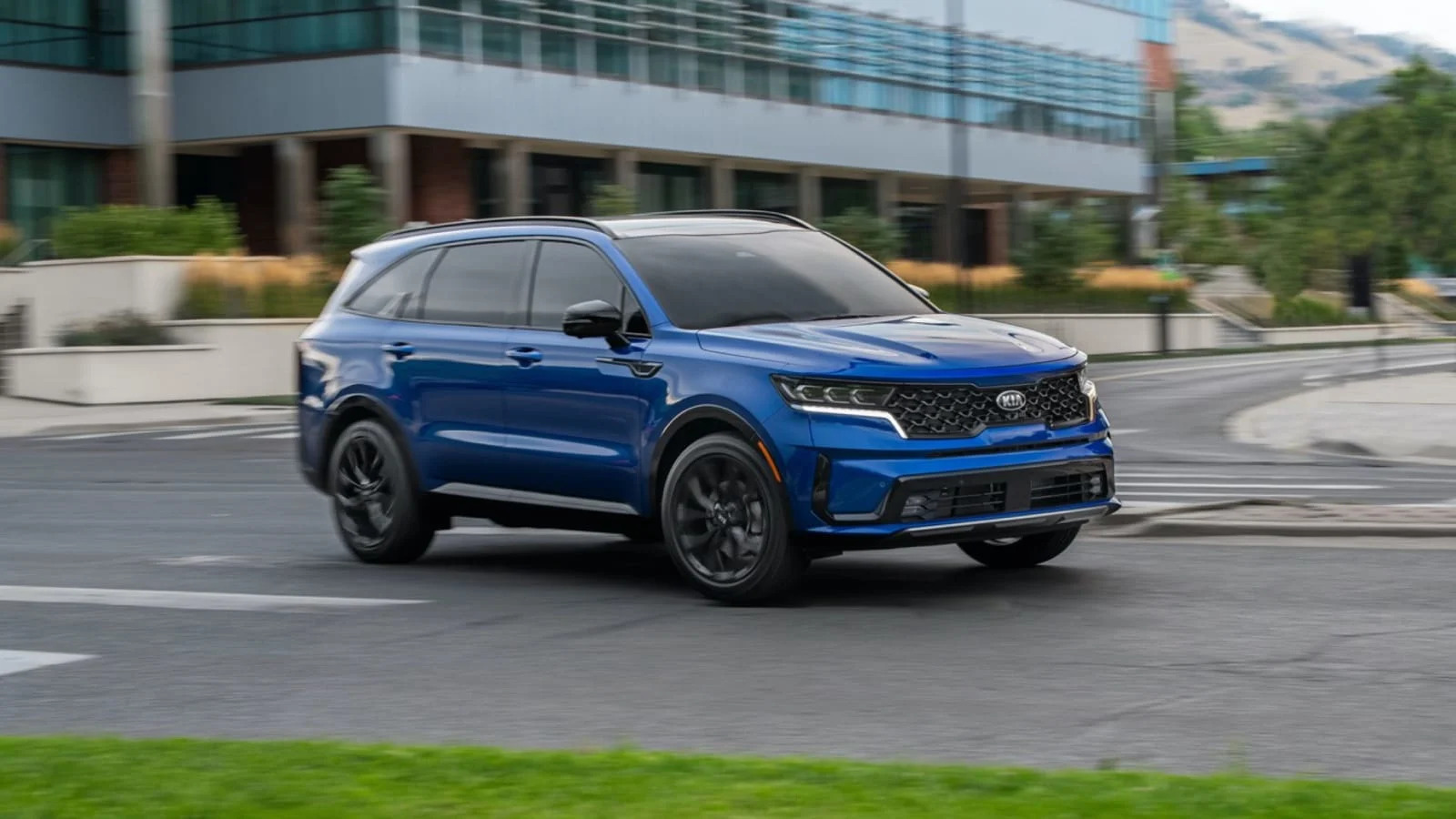Pros: Available hybrids; dimensions may be ‘Goldilocks’ just-right size for many; excellent safety tech
Cons: Slow base engine; hybrids don’t get updated for 2024; cramped third row for a three-row SUV
The Kia Sorento has been updated extensively for 2024. It also carries over mostly unchanged. Huh?
You see, the versions powered only by gasoline get a litany of updates and upgrades, including bolder styling, a new tech interface encased within a slick curved housing, additional features and a new X-Pro rugged trim level. The 2024 Kia Sorento Hybrid and Plug-in Hybrid don’t get any of that, and are the same midsize, three-row SUV you could get last model year. They’ll be getting the same updates, minus the X-Pro, for 2025.
So, the question must be asked: Should you wait for them? After spending time in the new Sorento X-Pro as well as seeing other versions in person, we can’t say it’s a substantial leap over what was already pretty great. It’s mostly aesthetic changes, and it’s quite possible that some may find the new interior controls and infotainment system less user-friendly. There also aren’t any noteworthy mechanical updates, apart from the off-road-oriented X-Pro, so the rest of the 2024 Sorento lineup should theoretically drive the same. The hybrids will drive exactly the same, which is just fine.
Ultimately, we feel safe in saying that the 2024 Kia Sorento remains one of our top-recommended three-row SUVs. We’re positive about the hybrids, especially as electrified family vehicles are so rare. We appreciate every Sorento’s in-betweener size for those who need more space and seating than two-row compacts offer but don’t want to go all the way up to Telluride-sized family haulers. In general, the Sorento is very well-rounded, which the updates shouldn’t change … regardless of when they occur.
Interior & Technology | Passenger & Cargo Space | Performance & Fuel Economy
What it’s like to drive | Pricing & Trim Levels | Crash Ratings & Safety Features
2024 Kia Sorento X-Pro and 2024 Kia Sorento PHEV
What’s new for 2024?
The gas-only Sorento trims get new front styling and mildly refreshed rear styling. We’re not sure it’s an improvement, could actually be a bit ugly now. Inside, there’s a new infotainment system with a next-generation user interface, bigger screens encased in a single curved housing and wireless Apple/Android connectivity across the board. Kia’s dual-mode climate/infotainment control panel previously found in the EV6 and Niro make their way into the Sorento, which may not be to everyone’s liking. A new X-Pro trim level debuts, building upon the existing X-Line with BF Goodrich all-terrain tires wrapping 17-inch wheels. You can read more about these changes in our 2024 Kia Sorento preview, and read our first drive of the 2024 Sorento X-Pro.
The Sorento Hybrid and Plug-In Hybrid effectively carry over unchanged for 2024, but will get the above style and infotainment updates for 2025. You can see the visual changes above.

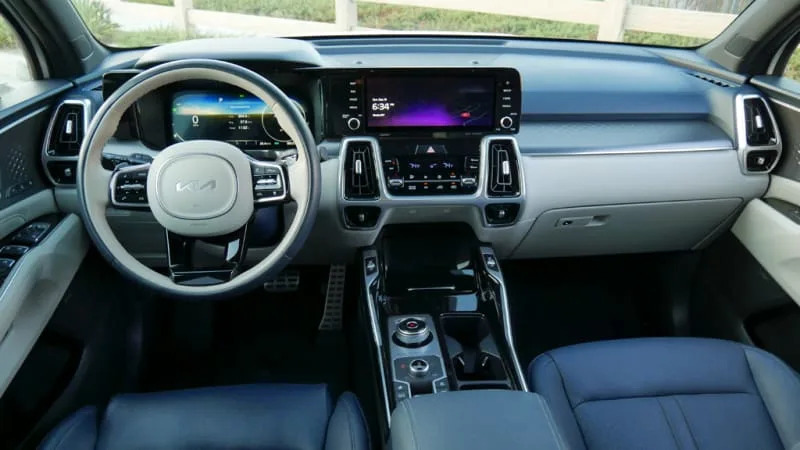
What are the Sorento interior and in-car technology like?
As noted above, the interior differs based on powertrain. The updated design (above in tan) is sleeker, with slim door-to-door air vents, touch-sensitive menu buttons and a wow-moment curved infotainment panel. The hybrids’ carry-over design (above in white and blue) features eight air vents, physical buttons, a traditional instrument binnacle and dash-top screen. It definitely doesn’t look as good, but we also thought it looked pretty good before and still do. Those touch-sensitive menu buttons are also a love-‘em-or-hate-‘em feature in other Kias (the hate-‘em group seems to be people who frequently adjust the climate control system), so depending on your point of view, functionality could actually be worse. The Sorento’s high-quality materials and solid build quality are the same with both, though.
Technology is totally different. All hybrid trims get a 10.25-inch infotainment screen that runs a user-friendly, feature-packed interface that’s more modern than a lot of other carmakers’ infotainment systems. The new 12.3-inch touchscreen interface found in the updated gas-only versions features a different user interface, and in certain ways, we think it might be a step back in terms of functionality. There’s no way to see audio information in the split-screen function when using navigation, and when using the radio, you can no longer see your favorite/preset buttons and the current song playing (as you can see the old/hybrid system could in the photo below). The radio menu shortcut button is also gone altogether, meaning you have to press “Media” a bunch of times to get where you want to go. We do like that both have a customizable star button, which we like to set for quick access to Apple CarPlay or Android Auto.
The Hybrid gets traditional gauges standard on the EX and an all-digital instrument panel on the SX. In the new design, a second 12.3-inch screen is used for the instrument panel, but designs differ by trim level. The SX Prestige pictured in the gallery above offers multiple design choices, which can be tied to drive mode or individually selected.
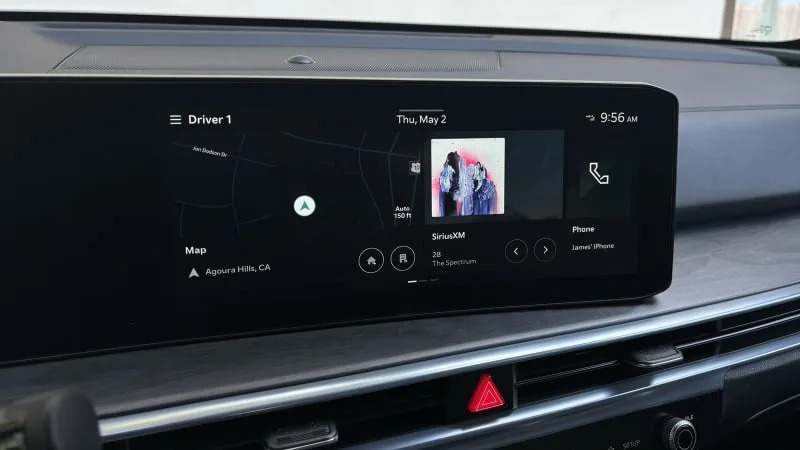

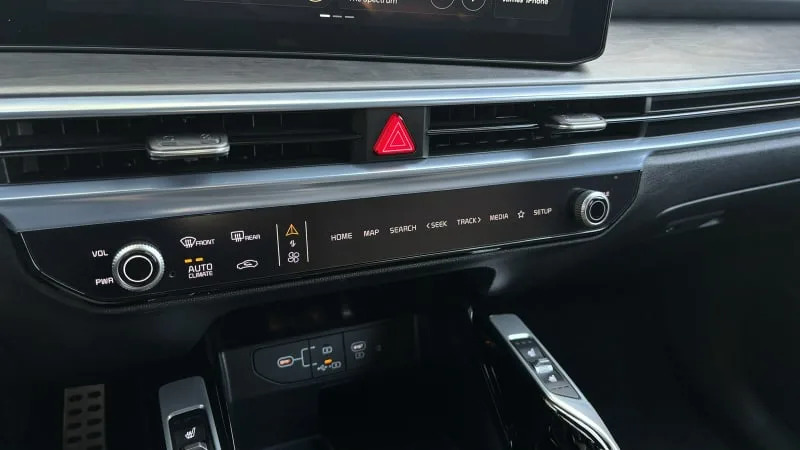

How big is the Sorento?
The Sorento has three rows of seats and is considered a midsize crossover, but it’s considerably smaller than other vehicles described as such. It’s 8 inches shorter in length than the Telluride and 4 inches narrower, which is significant. It also has nearly 2 fewer inches of third-row legroom (plus a seat that’s much closer to the floor and therefore less comfortable) and 3.1 fewer inches of middle-row shoulder room. Those are two dimensions most likely to make a difference when loading up with people. All that said, the Telluride is one of the biggest vehicles in the segment, and the Sorento isn’t that
One other thing to keep in mind: A second-row bench seat is optional on most trims, meaning there is frequently only six seats aboard with the second-row captain’s chairs and two-person third row. Most three-row crossovers these days have seatbelts for seven or eight depending on the middle seating row. Access to that third row could also be better as the second row just doesn’t leave much of a gap when slid forward (pictured below).
Cargo space with the third row lowered (38.4 cubic feet) and all seats lowered (75.5) is better than what you’ll get in most two-row midsize SUVs (and a bit better than what you get in a Honda CR-V or Toyota RAV4). Where it really suffers relative other three-row crossovers is cargo space behind the raised third row. Its mere 12.6 cubic feet trails all those bigger three-rows considerably, and in terms of actual luggage, could barely fit two carry-on roller suitcases in our testing. As such, using all three rows is something that’s unlikely to be done for lengthy journeys, unless your family packs really light or invests in a roof-top carrier. If that investment seems likely, know that the X-Line has raised roof rails (pictured below) that generally make doing so a lot easier.
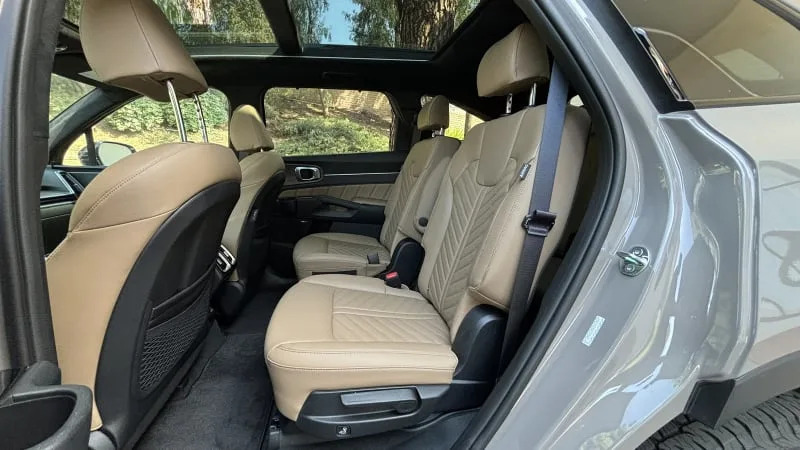

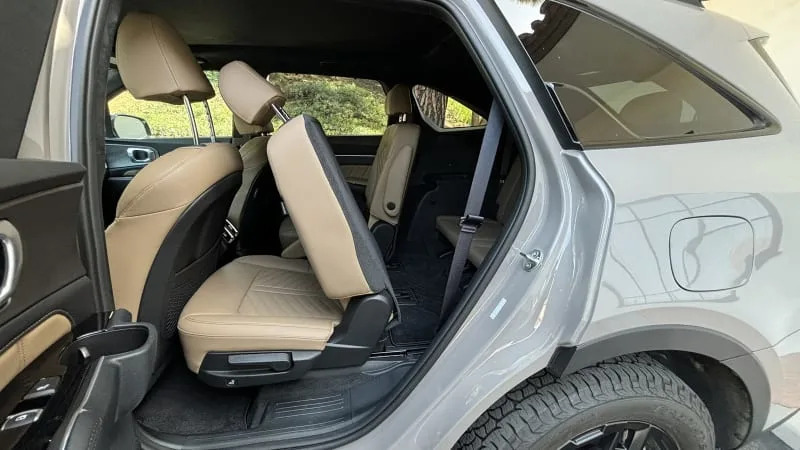
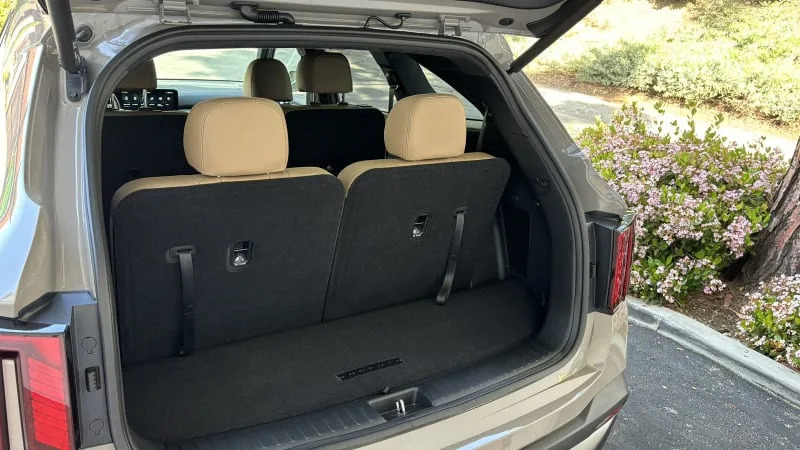
What are the Sorento fuel economy and performance specs?
The 2024 Sorento LX and S trim levels come standard with a 2.5-liter inline-four that produces 191 horsepower and 181 pound-feet of torque. A traditional eight-speed automatic and front-wheel drive are standard, with all-wheel drive an option. Although engine output is similar to what you’d find in a CR-V
